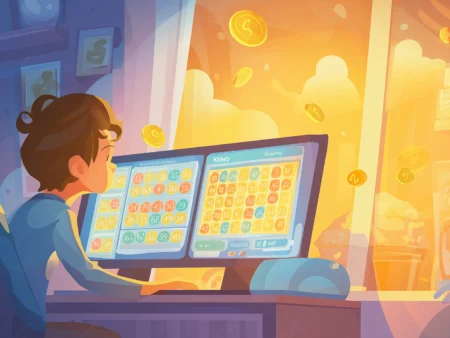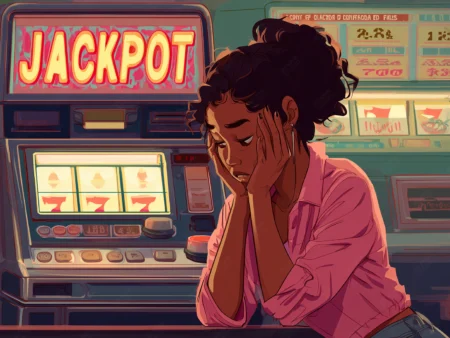There’s more to winning in poker than the luck of the draw. Even poker strategies only get you part of the way there. Learning the secret and mastering bluffing and folding is an intricate part of the process. In this blog, we’ll help you reevaluate your poker strategy, underpinning the psychological and mathematical aspects of bluffing and folding to improve your poker skills.

The Art of Bluffing: Deception as a Strategy
As one of the best poker betting techniques, you shouldn’t underestimate how effective deception can be as a poker strategy. Here, Go Spin walks you through the basic concept of bluffing and reveals what you need to know:
What Is Bluffing in Poker?
Bluffing, as we’re sure you’re aware, is the ability to deceive fellow players. It may mean underplaying how significant your hand is or overselling a poor hand to trip up rivals. Learning how to master poker bluffing is an intricate process, and it begins by discovering the three main types of bluffs high-rollers use.
Types of Bluffs Used by High-Rollers
- Pure Bluff: This involves selling a dummy. Essentially, you’ll try to convince others that your weak hand is strong, as you try to force competitors to fold.
- Semi-Bluff: A Semi-Bluff sees you try to throw a bluff with a drawing hand that you may improve during gameplay.
- Continuation Bluff: The most aggressive form, you’ll use this after a pre-flop raise. It’s also known as a C-Bet and is most effective when you have a strong hand.
Reading Opponents for Effective Bluffing
Learning how your opponents play takes more than a few hands. Moreover, how they bluff may be dependent on the game they play. Bluffing tactics for Texas Hold’em compared to, say, Omaha, will differ. Texas Hold’em features much more aggressive bluffs – Omaha does not. Pay attention to when your opponent’s reveals their bluff, and start making notes. Obviously, in çevrimiçi poker, you can’t see facial tells, but you can spot patterns when they fold and bluff.
Best Situations to Bluff in High-Stakes Games
The best time to bluff is generally when you’re late into the game. Opponents will fold more frequently later in the game once the pot rises in value. The more you play, the more accustomed to your opponents’ tactics you’ll get, and bluffing against so-called predictable opponents is ideal.
The Power of Folding: Knowing When to Let Go
Alongside bluffing, learning when to fold in high-stakes poker is critical. This can mean you’ll fall victim to a bluff yourself, but you won’t lose your bankroll doing so. Let’s explore the power of folding next.
Why Folding Is an Essential High-Roller Skill
Needlessly playing on in a losing hand isn’t advised. You’ll want to avoid unnecessary losses. The best poker pros play the long game, and you’ll want to do that, too. Therefore, while you can attempt a pure bluff with a poor hand, it is often better to simply fold and wait for the next deal. Folding on poor hands also allows you to sell a pure bluff later when the pot is bigger. If you haven’t done it before, your opponents won’t expect it.
Key Hands Where Folding Is the Best Move
The best time to fold is early on, with weak starting hands. If you’re playing against aggressive opponents, you’ll also want to consider folding on marginal hands. Not doing so is a trap many fall into in high-stakes games.
How to Read Betting Patterns for Smart Folds
Get a good understanding of how strong your opponents are by studying their betting patterns. While it is essential to read rivals’ betting patterns for smart opportunities to fold, it’s also worth watching for over-betting, and trap plays and fold accordingly when you see them.
Folding vs Calling: Balancing Risk and Reward
Poker is a game that balances risk and reward. It’s up to you to determine when it’s worth your while. Go Spin recommends understanding pot odds and implied odds while considering fold equity. These terms are challenging for rookies, but understanding them brings fresh insight into when to fold or call.
Combining Bluffing and Folding for a Winning Strategy
The best strategy you’ll have is combining bluffing and folding – again, when necessary. Learning when to do so may depend on your game, your location, and the aggressiveness or level of skill of competitors.
The Mind Game: Psychological Warfare at the Table
Poker is a psychological mind game as much as a mathematical one. In physical poker games, it’s possible to add body language, and poker tells to your skill set, and these can help you determine whether to fold or bluff. However, that’s trickier to do online when you must rely on the betting patterns of your opponents to work out what they’re up to.
Advanced GTO (Game Theory Optimal) Strategies
Poker pros use GTO (Game Theory Optimal) strategies when playing – or, at least, they’ll try to. GTO strategies form part of Texas Hold’em advanced tactics, but they aren’t limited to that game. In theory, a Game Theory Optimal strategy is one that is unexploitable – it cannot be bettered or countered by opponents. It aims for complete dominance at the table. It requires identifying weaknesses and holds in rivals’ strategies, alongside bluffing and folding to match those perceived gaps. We encourage Go Spin readers to explore this complex topic alongside learning how to bluff and fold if they want to tackle high-rolling poker sharks.
Adjusting Strategies for Live vs Online Poker
When playing online poker, gameplay is faster, due to automated dealers. You’ll speed up your decision-making and betting strategies to compensate. This can put added pressure on players. You’ll also be at a disadvantage as you can’t spot any visual signs of bluffing, save for betting patterns. However, with time and practice, this can be overcome by dedicated players.
The advance of AI and poker solvers complicates bluffing in online poker. In theory, these algorithms and programs can help players cheat against rivals, but they can also help online poker games identify your betting patterns and strategy. However, they aren’t invincible. Again, throwing out unpredictable gameplay, bluffs, and folding can confuse even the mightiest of software. The important thing to remember is that bluffing is more challenging online but not impossible.
Mistakes to Avoid When Bluffing or Folding
Lastly, let’s touch on three key mistakes you’ll most likely make when attempting bluffing or folding. Don’t worry about these errors right now – just try to control them as you hone your skills:
- Over-bluffing makes you incredibly predictable and helps rival players spot you coming a mile away.
- Folding too often has its own downsides, as it means you may miss out on valuable hands.
- Misreading opponents and table dynamics is bound to happen, especially if you’re only focusing on your own hand. Keep tabs on what others do and study their behaviour to ensure you don’t miss out on calling their bluff.
Takeaways
Go Spin encourages you to practice and refine your skills – a lot. Using the skills and techniques discussed, we believe that anybody has the ability to become a better poker player. Try out these bluffing and folding strategies in real-time in online poker rooms. The place to begin is one of our trusted and recommended poker casinos, so explore them at your leisure today.
SSS
How often should I bluff in poker?
It’s not so much a question of how often. It’s more a question of what you are holding and what’s on the table when you do so. As a general rule, don’t bluff too often, or you’ll give yourself away to rivals.
How do I know when my opponent is bluffing?
By studying their behaviour. Watch how they play, when they bluff and fold. Remember, you can spot patterns in their behaviour to see what they are up to, just as they can do the same with you.
What is the best time to fold on a strong hand?
That depends on how strong your hand is. Generally, in Texas Hold’em poker, folding before betting is advised if you hole cards total six or less. Over 75% of Hold’em players do this.
Is bluffing more effective in online poker or live games?
It could be effective in either, although how you go about it differs slightly. In our experience, we’ve had more luck bluffing in live poker games, though, because humans make more mistakes than algorithms.
What is GTO in poker, and how does it help bluffing?
Game Theory Optimal (GTO) is a supposedly unbeatable mixed strategy developed to be mathematically perfect. It involves identifying patterns in your opponent’s gameplay and exploding perceived weaknesses. Naturally, you’ll need to bluff (at times) and fold (at others) to make your GTO strategy work.












































